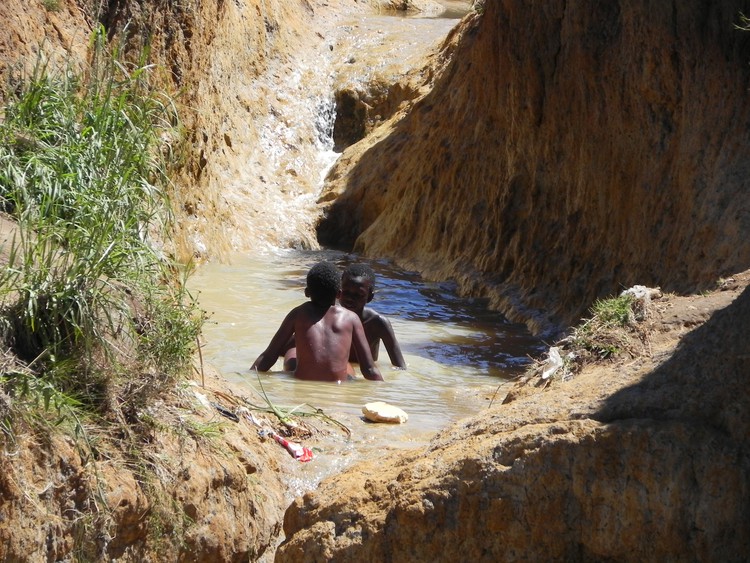Newcastle children defy their parents and swim in dams
Two children have drowned but that doesn’t stop these boys who have no pool to swim in
Twelve-year-old Siphosakhe* from Mndozo village in Newcastle wants to compete as a swimmer one day. But there is no swimming pool anywhere near where he lives, so he and his friends sneak out to swim in a dam, disobeying their parents who are afraid the boys will drown.
In January, 12-year-old Siyanda Ngubane drowned in a local dam. A ten-year-old boy drowned in the same dam in September 2018. Both drownings were reported to the Osizweni police station and inquests were opened.
Siphosakhe and his friends know about the boys’ drownings, but this does not stop them from swimming in another dam about two kilometres from the ‘’dam of death’’.
‘’In our village there is no swimming pool where we can swim. Last year in December I visited my uncle in Johannesburg where for the first time in my life I enjoyed swimming in the swimming pool with my cousins and their friends. Village children like us have no choice but to use the local dams and rivers to swim,’’ said Qiniso*, a Grade 7 pupil.
He said the boys avoided swimming with older boys who went to the deeper part of the dam.
Qiniso said the boys run away when they saw elders from the village near the dam. “We know the elders are against our swimming. That is why we have decided to find another spot far from their eyes,” he said.
‘’I wish we could have a swimming pool in our village one day. Some of us are good at swimming and have dreams of becoming professional swimmers one day like the ones we watch on TV,’’ said Siphosakhe.
According to National Sea Rescue Institute (NSRI) spokesman Andrew Ingram, about 600 children drown in swimming pools every year. But statistics about the children who drown in the dams and rivers in the country’s rural areas are hard to come by.
The only township swimming pool in Newcastle is in Madadeni, ten kilometres from Osizweni. For Qiniso and his pals, that is too far — unless their parents fork out R30 per child for a return taxi fare.
Ward councillor Bawinile Khumalo said: ‘’The local village children are underprivileged compared to their peers in the urban areas. But we are totally against them risking their lives by swimming in the dams and rivers, as it is very dangerous. Children drown almost every year in these dams and rivers, which is why we urge parents to be very cautious and vigilant to avoid such tragic incidents.”
The NSRI runs a programme in schools teaching children how to be safe in or near water, what to do in an emergency, and how to do hands on CPR. Since the programme started in in 2006, more than two million children have been taught, says Ingram.
“In 2018 our instructors reached 464,313 children, of whom 153,147 were in KZN.”
The NSRI also hopes to roll out its successful Pink Rescue Buoy programme to inland waters. Until now the programme has been focused on beaches, where so far the bright pink buoys have been used to help 40 people in danger of drowning.
“Sea Rescue’s mission in 2019 is to find sponsorship and roll the Pink Rescue Buoys out on inland waters with community support.” says Ingram. A Pink Rescue Buoy, with the sign that it hangs on, costs R1,500.
* Not their real names.
Next: Lottery’s promise of toilets leaves a nasty smell
Previous: Waste pickers march to be recognised
© 2019 GroundUp.
This article is licensed under a Creative Commons Attribution-NoDerivatives 4.0 International License.
You may republish this article, so long as you credit the authors and GroundUp, and do not change the text. Please include a link back to the original article.



